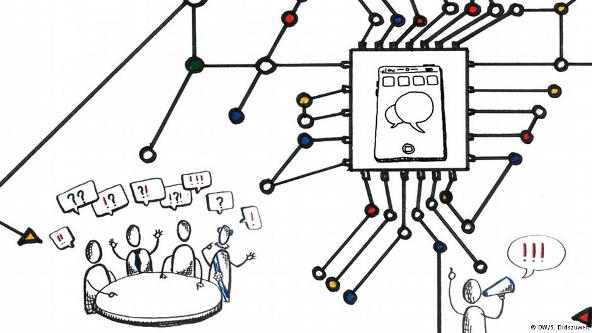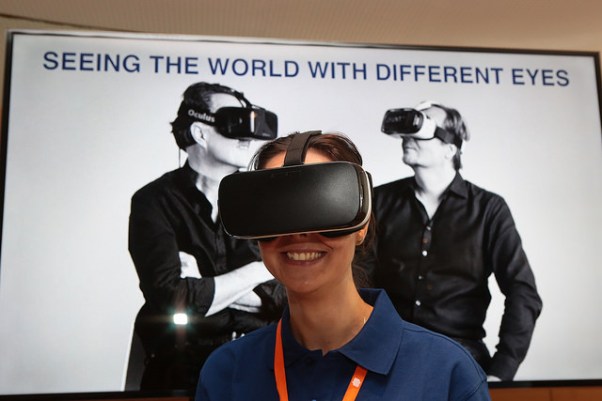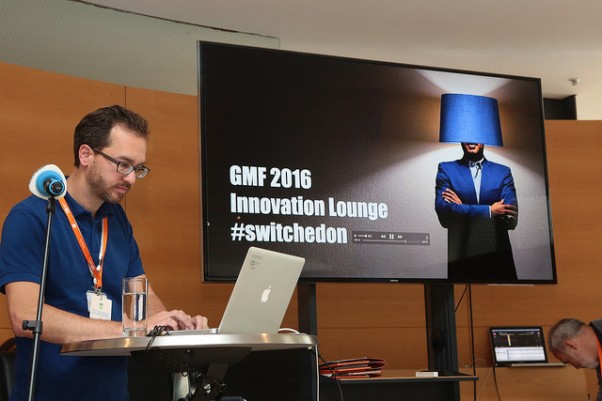Search Results for Tag: DW Innovation
The trends will shape the future of journalism
What are the tools that will shape journalism in the future? What are the social trends that will guide how people think and interact with the media? During the 2018 DW Global Media Forum at the Media Innovation Lab Day (MILD), DW innovation is inviting innovators and experts for discussions and live demonstrations of ideas and technology.
One of the most important changes facing media is a generational shift in how people understand and use information and communication tools. MILD is putting this at the forefront with a discussion on “digital disruptors” from the founder of a platform called “After the Millennials,” which focuses on how a new generation is set to completely transform industry.
The usage habits, expectations and interactivity vis-à-vis mass media from the so-called “Generation-Z” will be what journalists, producers and developers will dealing with in 10 years. Organizations that can remain prescient, are those posed to succeed.
Transformative technologies like artificial intelligence in newsrooms and the use of bots and drones will also be discussed with interactive presentations. Participants will see first hand how new technology will look, before it becomes a standard feature in workplaces.
As an international media organization, DW stays ahead of trends that will become standards in the future. At the Global Media Forum and MILD, guests from around the world will have a valuable opportunity to network and create new ideas for the future.
Telling stories with virtual reality
What if you could feel what it is like to be there as news happens? Using new virtual reality tools, journalists can recreate news worlds and users can interact directly with the environment.
DW’s Innovation projects team presented this technology at the Global Media Forum and allowed the audience to experience the latest applications and devices.
It is striking how a virtual reality story creates a sense of presence and forces people to think differently about a story. Users can experience the news as a protagonist, and encounter jarring emotions and sensations. The meaning of a story is transferred directly by the medium and the information becomes an accessory, just like in real life.
A best practice example of applying virtual reality technology to journalism comes from the Guardian in their report on solitary confinement. The multimedia story, “6 x9: explore solitary confinement in 360”, expresses how solitary confinement could be considered torture by combining first-hand reports with the VR experience of being confined to a cell 23 hours a day. Another example, Harvest of Change, from the Des Moines Register in the United States, explores issues reshaping farming in America.
This user experience is becoming more accessible because a variety of virtual reality accessories for mobile devices are more affordable.
Wireless virtual reality headsets are set to grow in popularity according to analysis from DW Innovation. Immersive info-graphics providing data on top of a virtual environment could be another big opportunity to translate complex stories to a wider audience in a visually appealing way. In an early VR experiment, DW Innovation cooperated with the Berlin VR start-up VRagments to visualize parts of the new Berlin Airport (BER), which is still under construction.
As the trend in virtual reality news progresses, innovators like those at DW will be asking how to create and improve virtual reality stories that address what viewers want and uncover their interests to intimately depict important stories.
Three innovations that are reshaping journalism
Artificial intelligence, data technology and mobile devices have huge potential in advancing the way journalists use and disseminate information. However, bringing innovation into newsrooms requires streamlined applications that journalists can easily use. With a wide network of partnerships and many big ideas, DW’s innovation team is working on an array of research projects to develop tools that will be changing how we produce and consume journalism. These projects were on display at the “Innovation Lounge” during the 2016 Global Media Forum, where guests could experience new tools and technologies hands on.
After looking at the research and development being done at DW Innovation, it becomes clear that journalists need solutions for using and interpreting large amounts of data and information coming from many sources, languages and formats. There is more information available than ever before and the key is turning information into interesting stories.
Natural Language Generation (NLG) technology, being pioneered by start-ups such as Narrative Science, turns data into readable reports. Applying this to journalism, DW’s innovation team is currently working on a new project called PollyVote, which for the first time is developing tools to transform polling data into automated news reports for the 2016 US presidential election. Research done by DW Innovation indicates audiences tend to respond positively to these automatic reports, citing a study that ranked them as informative, trustworthy and accurate.
Besides having raw data as useable information, journalists also have a huge variety of news sources at their disposal. At the intersection of big data, automation and multimedia production is News Stream, a joint project being developed by Fraunhofer IAIS, Neofonie GmbH, dpa and DW.
News Stream combines multimedia sources on one platform so journalists can quickly find exactly the information they need to create the best possible content. From pinpointing audio clips to digging quotes out of manuscripts, journalists can access all possible content on a news item in one place.
For example, News Stream uses voice recognition technology that can identify the subjects voice in a recorded press conference and send an automatic e-mail to the journalist with the desired quote. It also allows for automated research covering social media, agency sources and other news outlets. Journalists can even monitor in real time how the competition is reporting on a news item in real time.
According to the team at DW Innovation, at the moment News Stream has the potential to help journalists create better content more efficiently, but the most important step still is integrating these tools into newsrooms.
Adding to the journalists’ innovation toolbox along with raw data aggregation and source integration are methods for working with social media and eyewitness media as a news source. Both present problems of verification, but are becoming indispensible for fast-breaking news stories.
Reveal is a EU-supported project focused on dealing with social media verification. Multiple partners, including DW Innovation, work on tools, methods and technologies that will support journalists with the verification of online news items.
As part of the project, DW Innovation has developed a verification checklist for DW and media partners like ARD and EBU that outlines the fundamentals of how to use eyewitness material in news reports. This helps journalists everywhere make better decisions about breaking news content and produce trustworthy reports. There is furthermore a growing niche verification industry with examples like First Draft News, which brings together a variety of verification resources, or Storyful, which curates viral content and provides verification of UGC and social content for news outlets.
In order to continue its work in this field, DW Innovation has secured funding from Google’s Digital News Initiative (DNI) to build a collaborative social media verification platform and to launch another EU co-funded project called inVid,which specifically develops tools and workflows for video verification.
As the public comes to expect better data journalism and different ways to experience news, these types of innovations that are pioneered at DW will be growing in relevance and presence across our media landscape.
Where does the rabbit hole of user generated content lead?
Head of Innovation Projects at DW
Couch potatoes aren’t inactive anymore. The days of uninterrupted attention are long gone, replaced by multi-device interaction on a massive scale. On average, 61 percent of TV viewers worldwide scan more than one glowing rectangle at a time. For news broadcasters to fully realize the potential of using the second screen, it is important to maintain a high-standard of conversation and discourse as a complement to informational content rather than simply providing an expansion on entertainment.
The advantages of using the second screen to both expand the audience base while providing them with a richer user experience will best be realized if the conversation takes place in an information-rich and well-organized environment.
Building and maintaining high-standard second screen platforms is a new part of the journalistic responsibility for accuracy and verification as the public forum has moved away from editorial pages and onto social networks. In contrast to the anarchy of the comments section, developing the conscientious use of the second screen as a public forum and promoting an intelligent exchange is an important value of public service media.
So what is next for the second screen? The EU co-funded project SAM (Socialising Around Media) is developing a Social Media delivery platform based on second screen and content syndication. It delivers content to the user rather than the user having to “pull” relevant material from digital sources and social networks. Since there are currently no standards for users, SAM aims to develop a standardized way to discover and syndicate media content interactively while providing users with content that is directed at their interests without them having to search for it manually. One part of this is creating dynamic social “hangouts” where people share interests, socialize and build virtual communities.
But the second screen is more than just a one way street and it has long been a way to access users’ thoughts, opinions and approval. It is also a place to mine for content and create real-time user experiences based on what is happening on television and on the streets. But broadcaster beware: How can we ensure that everything that is contributed is real and not some type of catfish scheme?
Here is where verification comes in. The REVEAL project focuses on verification technologies, tools and strategies in order to help journalists identify trustworthy user generated content on social networks. This includes assessing aspects such as the credibility of contributors, their reputation and influence, the quality of content items, establishing the right context and much more.
For journalists and broadcasters alike, mastering the flow of content through online networks is a primary focus of development and innovation. DW’s Innovation team is contributing to projects like SAM and Reveal to make sure the future of digital media looks as bright as we think it should.








Feedback